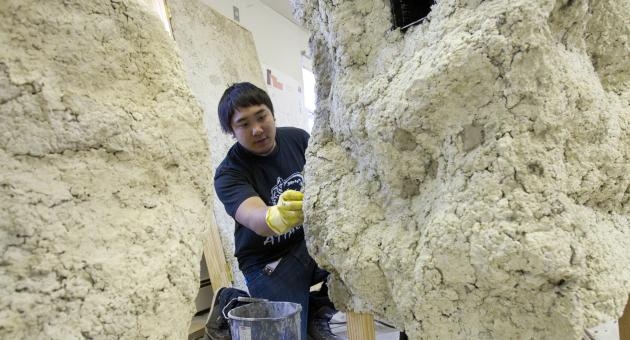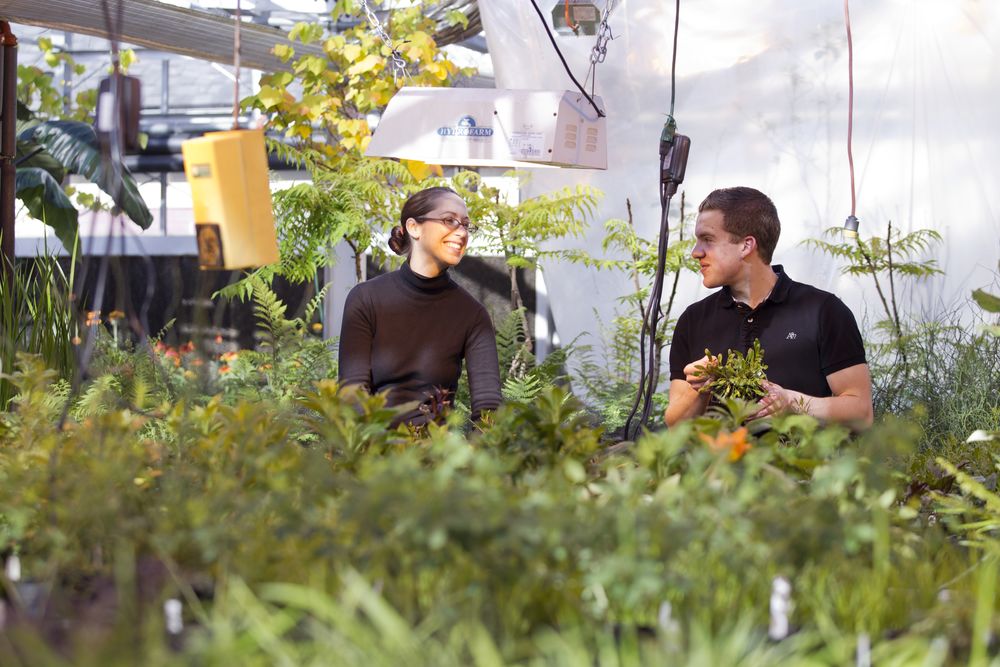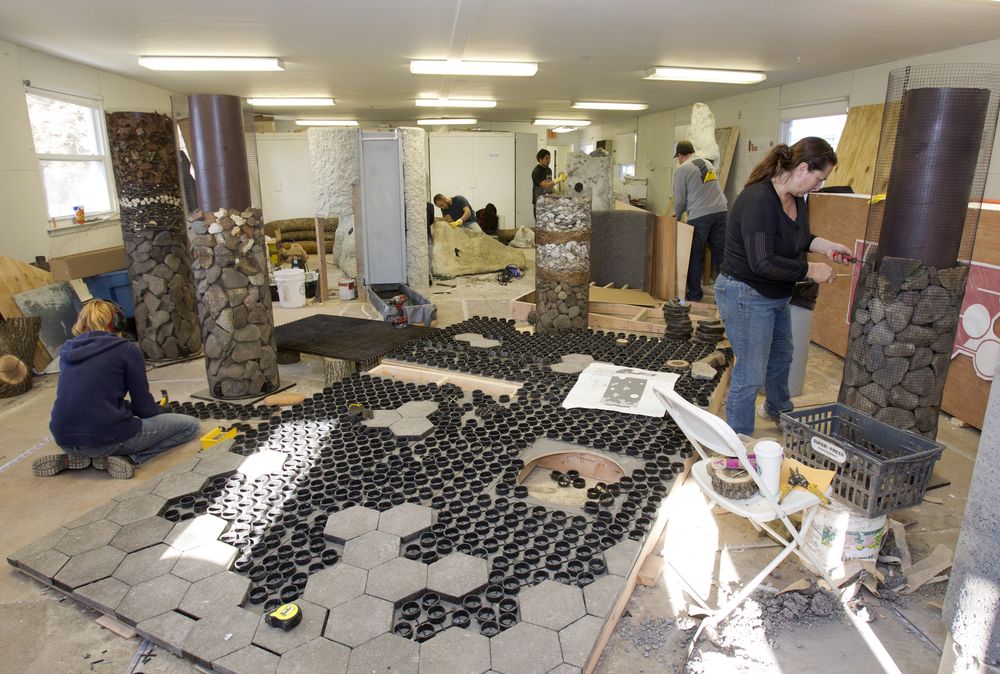Philadelphia Flower Show exhibit celebrates Hawaiian history and ecology

Students and faculty in Temple University Ambler’s Department of Landscape Architecture and Horticulture have high hopes for their 2012 Philadelphia International Flower Show exhibit — “Aloha ‘āina: A Return to Life with the Land.”
The exhibit seeks to illustrate how ideas about living with the land are just as practical in the northeastern United States as they are in Hawaii. For Aloha ‘āina, students drew inspiration from a wide variety of environmental, historical and cultural concepts integral to understanding Hawaii’s past, present and future and sought to create a a perfect balance between the natural landscape, architecture, landscape design, horticulture, and sustainability within the 20-foot by 30-foot exhibit space.
Towering above the lush landscape of paw paws, magnolias, corkscrew rush and pitcher plants will be an 18-foot tall mountain — the primary water feature of Aloha ‘āina — and a giant, tree-like shade structure standing nearly as tall at 15 feet. They are the tallest structures Temple has created for the Pennsylvania Horticultural Society’s annual event.
“With the mountain, we want to communicate how water accumulates and moves, from mists at the top tier to trickling and dripping water streams along its stone surfaces into pools that recharge the other water elements in the exhibit,” said Robert Kuper, assistant professor of Landscape Architecture, who is coordinating Temple’s 2012 Flower Show exhibit with adjunct assistant professor Michael LoFourno and horticulturist Kathryn Reber. “The shade structure takes a form inspired by trees sweeping up to the mountains.”
More than 20 Landscape Architecture and Horticulture students have been working on Aloha ‘āina during the fall and spring semesters in preparation for the March Flower Show, designing and building the structures and preparing 1,500 plants from about 100 different species.
Aloha ‘āina presents Hawaii’s history and ecology in microcosm, starting with Hawaii’s 2050 Sustainability Plan and traveling back to the ancient Hawaiian land division system of “ahupua’a,” during which families maintained wedges of land from the mountain crests to the ocean to provide all of their needs for food, water and shelter, with each area clearly demarcated by stone cairns.
“When you enter the exhibit, you move from an architectural environment to a more naturalistic environment,” said Kuper. “We want what we are presenting to be practical — cold frames, rain gardens, shade structures — techniques that a homeowner could replicate.”
Aloha ‘āina continues a long tradition in the Department of Landscape Architecture and Horticulture of interdisciplinary and hands-on learning experiences that promote a sustainable design approach. In the Ambler Campus Greenhouse, students have been working since October to ensure the plants and trees are ready for their big debut.
Each individual species has its own needs, and preparing the plants for the Flower Show is an intense process, said Reber.
“We have to closely examine each plant’s life cycle, how they grow, when they will bloom and under what conditions while also keeping the plants healthy and protected from pests and disease. It’s a great opportunity to learn how to troubleshoot and come up with creative solutions,” he said.
The 2012 Philadelphia International Flower Show — Hawaii: Islands of Aloha — runs March 4-11 at the Pennsylvania Convention Center, 12th and Arch streets.

